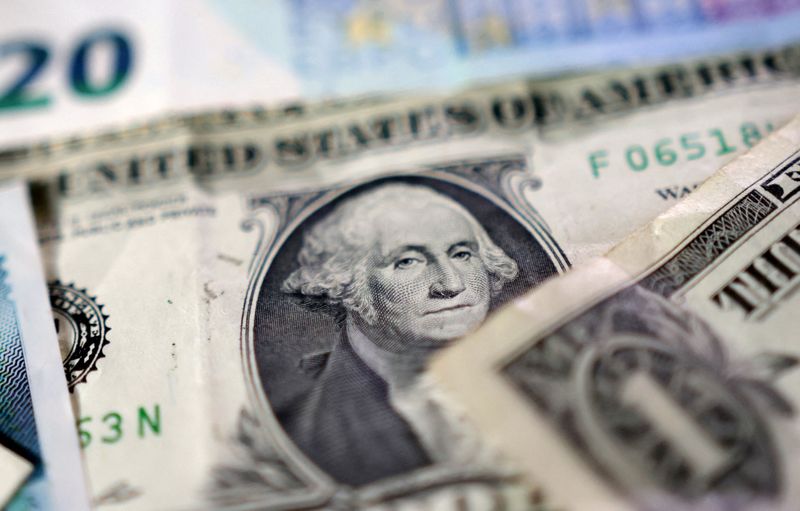EW YORK, NY — Wall Street is bracing for more turbulence after Moody’s Investors Service downgraded the United States’ credit rating, sending a fresh wave of concern through global financial markets already rattled by rising yields and mounting debt fears.
The agency’s decision to lower the U.S. credit rating came late Friday, citing ballooning debt levels and a lack of political consensus on fiscal discipline. It marked the final blow to America’s once-unassailable AAA rating from all three major rating agencies—an echo of a similar move made by S&P in 2011 and Fitch in 2023.
By Monday morning, the effects were already rippling across the markets. The 10-year Treasury yield—a closely watched barometer of investor sentiment—rose just above 4.5%, while the 30-year Treasury yield broke past the 5% mark. The moves underscore rising fears that investors may be losing confidence in U.S. government bonds, once considered the ultimate safe haven.

Wall Street’s Nervous Turn: A Familiar Pattern?
Stocks opened lower across the board. The Dow Jones Industrial Average slipped by 277 points, or 0.6%, while the S&P 500 dropped 1%. The tech-heavy Nasdaq led the declines with a 1.5% fall in early trading. Analysts warn the reaction could worsen if the sentiment continues to deteriorate.
“This feels like the beginning of another ‘Sell America’ wave,” said Kevin Matthison, a senior strategist at Orion Capital. “Debt downgrades, rising yields, and political dysfunction are shaking the pillars of investor trust.”
The phrase “Sell America” became infamous during previous market corrections, when global investors pulled out of U.S. equities, bonds, and even the U.S. dollar, favoring foreign assets and commodities like gold instead. On Monday, the dollar fell 0.8% against a basket of global currencies, while gold climbed 1.6%, trading near $3,236 per troy ounce.
Political Denial Meets Economic Reality
Treasury Secretary Scott Bessent downplayed the impact of the downgrade, calling it outdated and politically motivated. “We don’t place much credence in Moody’s reasoning,” Bessent told CNN. “Our economic fundamentals remain strong, and the upcoming tax policy will support growth and reduce the debt-to-GDP ratio over time.”
That tax policy—referred to by President Donald Trump as the “one big, beautiful bill”—has already sparked controversy. Critics argue that slashing taxes at a time of fiscal strain could be catastrophic.
America’s debt-to-GDP ratio now stands at 123%, compared to 92% when the U.S. was first downgraded by S&P in 2011. With interest payments consuming a growing share of the federal budget, economists warn the U.S. is inching closer to a fiscal cliff.
“This isn’t just a warning shot—it’s an air raid siren,” said Michael Rutherford, a macroeconomist at Axis Analytics. “Markets are already reacting. You see it in the 10-year Treasury yield, you see it in gold, and you certainly see it in the broader sentiment in the stock market 2025 outlook.”

A Potential “Liz Truss Moment”?
Citigroup analysts likened the situation to the U.K.’s 2022 market collapse under former Prime Minister Liz Truss. “Cutting taxes while increasing debt is risky policy timing,” Citi warned in a note Monday. “If the U.S. doesn’t pivot soon, we may see global investors exit en masse.”
Such sentiment echoes warnings from the Peter G. Peterson Foundation, which has long advocated for fiscal reform. “Moody’s downgrade should be a wake-up call,” said CEO Michael Peterson. “It’s unacceptable for a nation of America’s stature to harm its own financial credibility.”
Investors Flee to Alternatives
The downgrade has reignited the shift to alternative assets, much like the early 2025 volatility that rattled markets following trade war threats. Foreign stocks, commodities, and cryptocurrencies have seen renewed investor interest. Meanwhile, bond prices have fallen, pushing Treasury yields higher.
The latest stock market behavior reflects this anxiety. Investors once buoyed by Trump’s promises of deregulation and tax cuts are now confronting the possibility of economic stagnation, especially if higher interest rates choke business investment.
“It’s no longer just about inflation or employment,” said Sarah Linwood, senior economist at MarketPulse. “This is about trust in the U.S. economy. And for the first time in a long time, that trust is being tested.”
The Road Ahead for U.S. Markets
As the US stock market navigates the fallout, experts are watching for signs of policy shifts in Washington. Will lawmakers address the structural deficit, or double down on populist economic moves? Will the 10-year Treasury yield continue rising, further pressuring borrowing costs?
“The next few weeks are critical,” said Linwood. “If Congress shows even a hint of cooperation on debt reform, markets might stabilize. If not, brace for volatility.”
Until then, investors and institutions alike are bracing for more tremors. The Moody’s downgrade may not trigger an immediate collapse, but it has certainly reintroduced uncertainty into what was already a jittery 2025 stock market.

